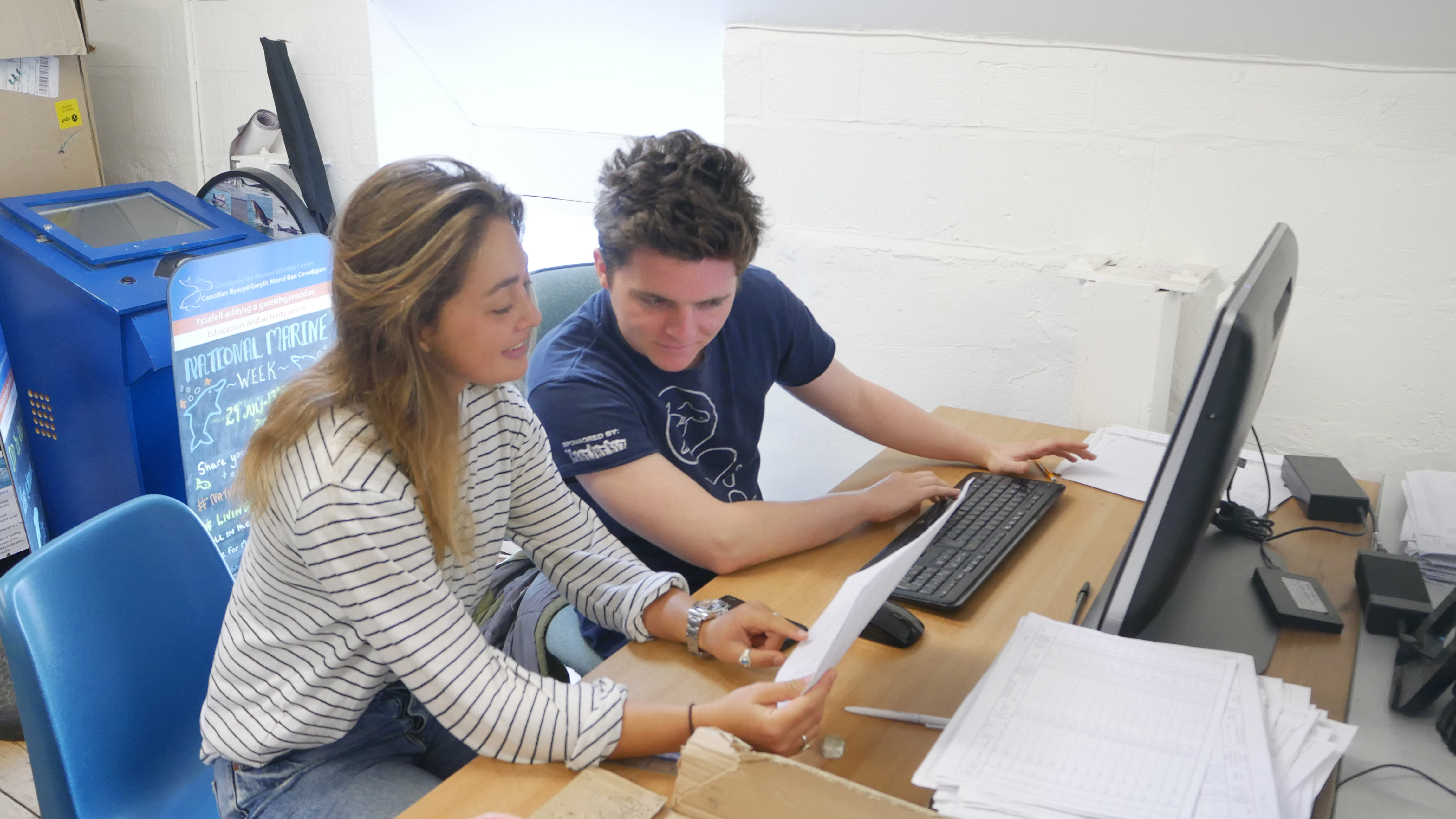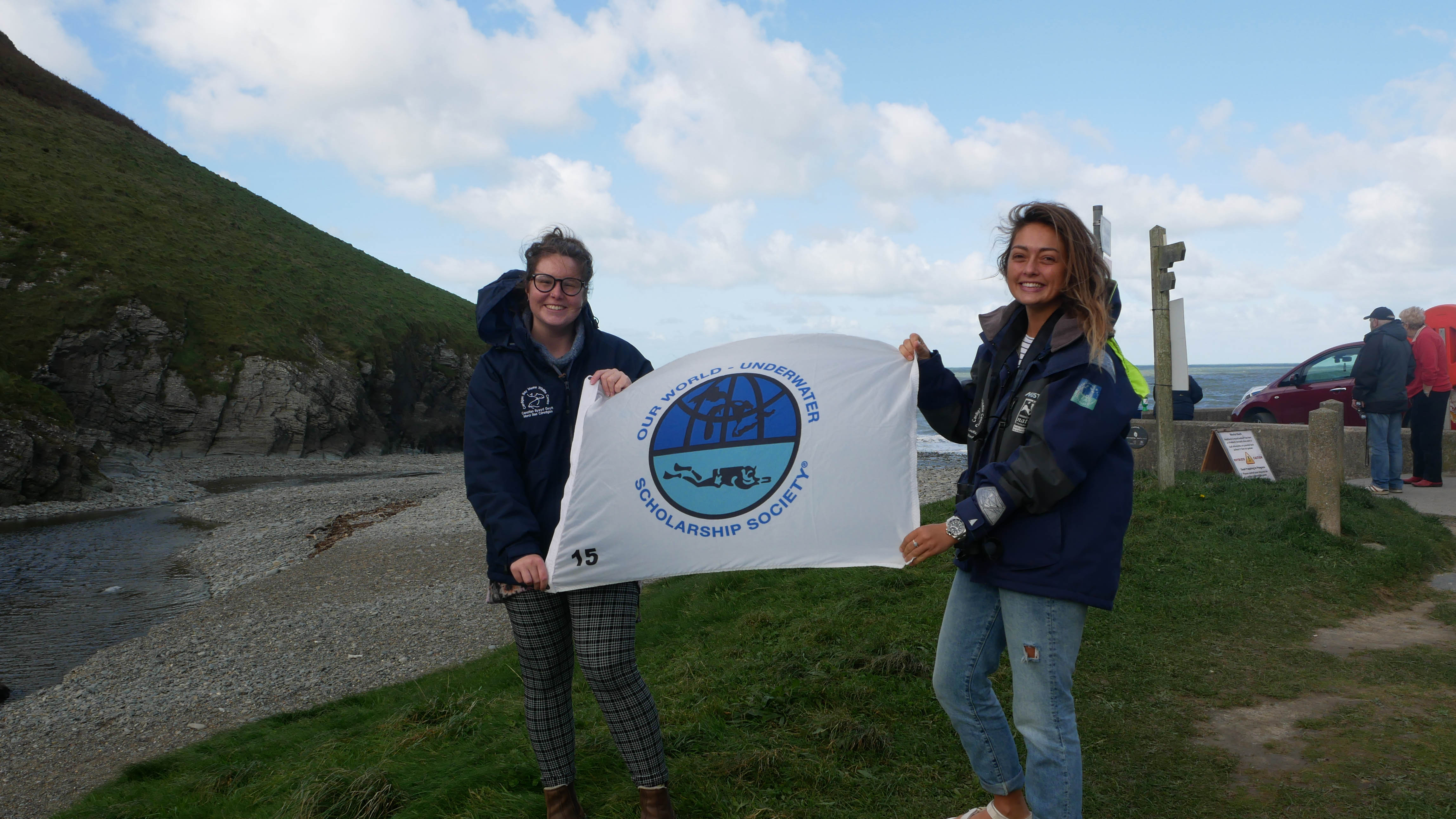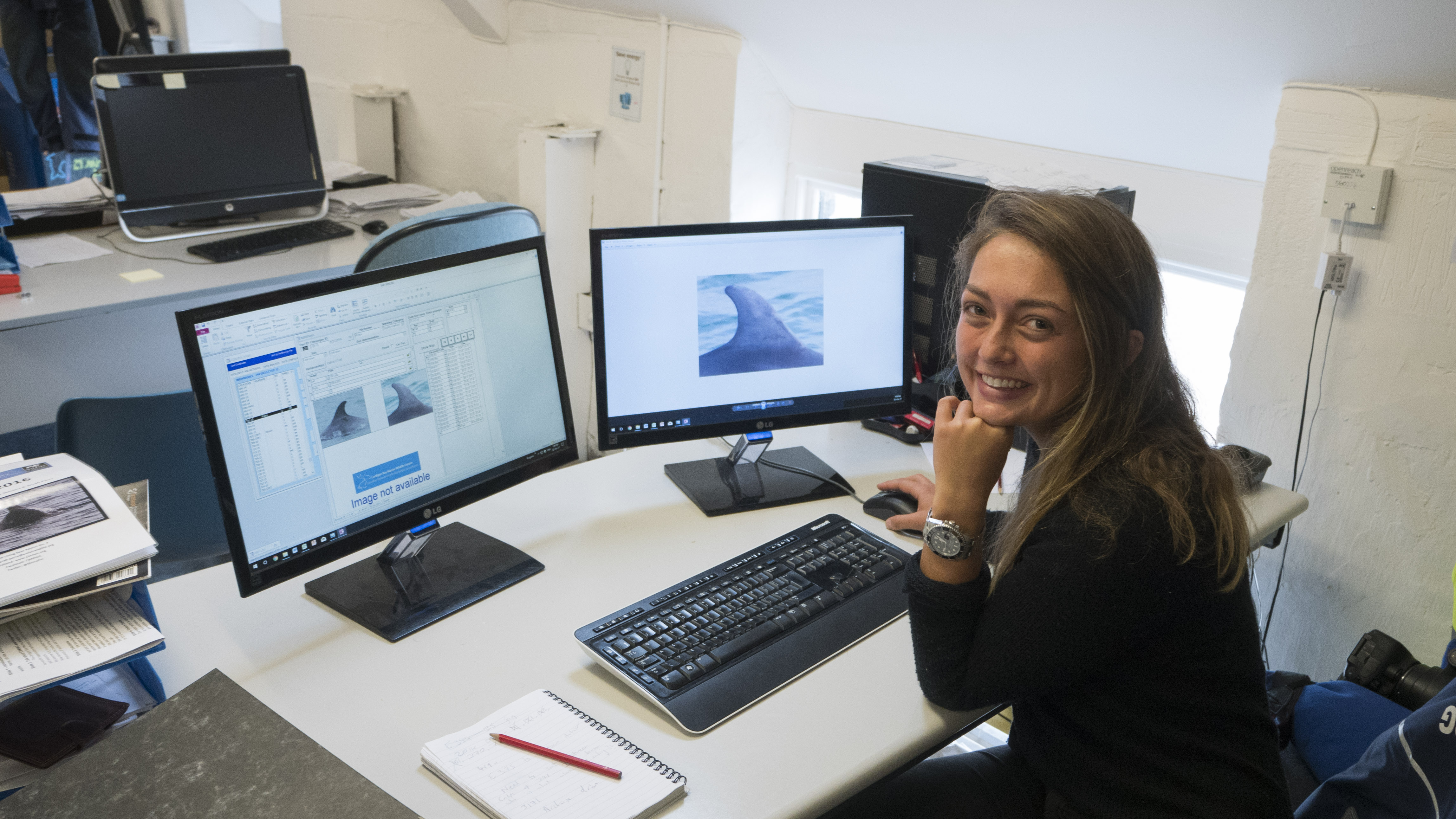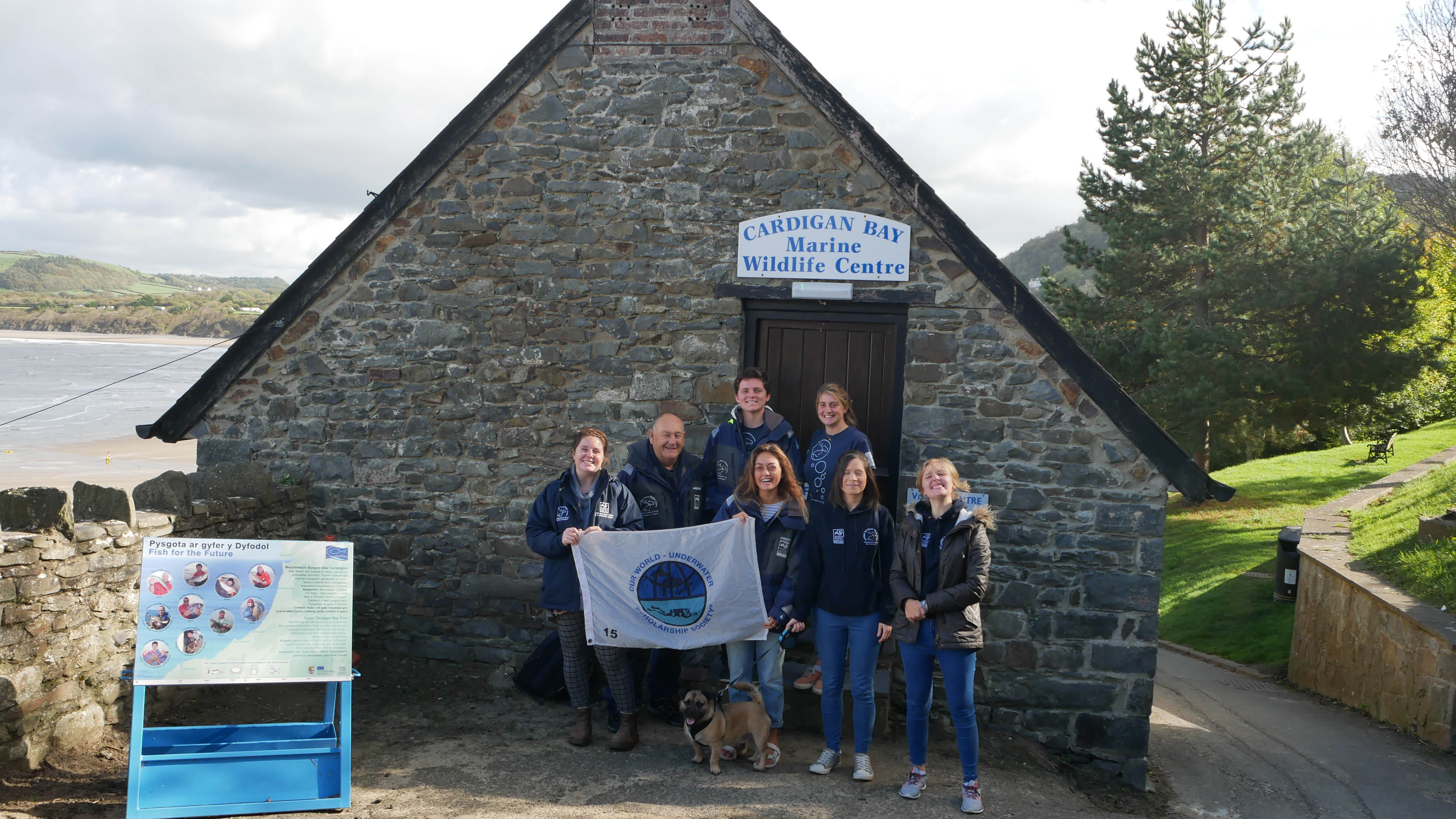On the 30th of September, I continued my epic dolphin quest throughout the UK and journeyed to Wales, where I would be joining the Cardigan Bay Marine Wildlife Centre (CBMWC) in New Quay. This journey in itself was quite intense, involving a 15 hour bus ride to London (that I forgot to take water and food on), followed by a five hour train ride and another hour on a bus the next day. All whilst lugging about 30kg of luggage; I’m still not quite sure how I survived that journey..
I made it safe and sound to New Quay, a gorgeous little town situated on the coast, and is very well known for it’s bottlenose dolphins and grey seals. The CBMWC know these dolphins quite well, having established a base in a heritage building on the harbour in 1996. The centre is part of the wildlife trust of south and west wales, and is run by #livingseas volunteers, and joining this team of enthusiastic ocean lovers for the week was an absolute blast.

Photo by Melinda Brown
I was greeted at the centre by Emma, who organises all the educational activities run through the centre. Emma and Laura, scheduled me into the incredibly smooth and well-oiled machine that is the CBMWC, allowing me to shadow experienced volunteers for the week to make sure I got to experience everything there is to do in the centre. First up was dolphin watch on ‘The Wall’. For anyone that’s seen Game of Thrones, I’d like you to know that the jokes were endless about doing ‘the watch’ on ‘the wall’, and my complaints about being cold were often followed by ‘winter is coming’ jokes (CBMWC even have a very large female dolphin called Brienne of Tarth by the way). In all seriousness though, being on dolphin watch on the break wall was always fun regardless of the weather. The volunteers use this opportunity to not only collect data about the familiar dolphins and seals that inhabit the bay, but use their knowledge to inspire the public who walked past about the incredible dolphins they know so well. This says so much about how lovely the organisation is, and how passionate everyone is there; it was always a pleasure to pass over the binoculars to someone walking past to show them the elusive dolphins and chat about their importance in the ecosystem. In my eyes, education is key to helping protect species and ecosystems like this, and CBMWC does a phenomenal job making sure the locals are given every opportunity to learn.

Photo by Dave Martin
The Cardigan Bay Marine Wildlife Centre has an educational centre that the volunteers take turns in staffing. The centre features not only a touch table complete with shark eggs and a dolphin skull, but interactive signs and activities, games and a virtual reality headset to take people into the dolphin’s world! These immersive activities were a fantastic way to involve all age groups in dolphin education, however my favourite part of the centre was a door that was labelled ‘Danger, Cardigan Bays Most Dangerous Animal Inside’. I watched a father and his young daughter approach the door, and when the little girl opened it, she saw herself reflected in the mirror. She looked at her dad questioning why she was dangerous, and her father began to explain about plastic pollution and the effects humans are having on the environment. I could have cried I was so happy at the father’s response. That single moment can shape someone’s life for the better, and I was so grateful to have been given the opportunity to be part of such an inspirational team that helps achieve this every day.

Photo by Melinda Brown
When I wasn’t watching dolphins or in the centre, I was helping enter data from the surveys onto the CBMWC’s databases. Each day the data from boat and land surveys is entered into the incredibly large database that the centre maintains. GIS software is used to map the dolphins movements throughout the area to document trends and distribution, and gives the crew there a good idea about what the dolphins are up to. I also had the opportunity to learn how Jack, a living seas volunteer, ID’s the dolphins, and how he tells them all apart. These skills are invaluable to me, as I hope to pursue cetacean research in my post graduate studies next year, and I can’t thank everyone enough for all the time and effort they put into making sure I understood everything!

Photo by Emma Lowe
I was also lucky enough to head out to Cwmtydu with Randi and Emma to check out some grey seals there during my stay, which resulted in a lot of very unprofessional squealing and cooing over the tiny seal pup that was playing in a rock pool with some dried sea weed. Randi was conducting a population survey, and used profile photos of the seals to tell them apart by their marks and spots. I loved watching the seals, and I was completely shocked when I found out that grey seals wean their young by 3 months and then the pups are on their own! This quick pupping process allows the mums to continuously produce offspring, ensuring their species survival.

Photo by Randi Wuerth

Photo by Randi Wuerth
Before I left the centre, Jack told me I could name a dolphin.. so I named a second dolphin Rolex; this time an adult. My biggest hope is that Rolex from New Quay will one day meet up with Rolex from the Moray Firth (a dolphin I named in Scotland), and hang out together. I’m not sure how many dolphins I would have to name Rolex to accurately display my gratitude to them for funding this amazing opportunity, but I guess I am well on my way to finding out!!

Photo by Jack Borrett
My brief experiences with the beautiful New Quay crew were way too short, and I wish I could have stayed longer! However, the knowledge I gained from their facility was immense, and amazingly diverse. From species ID, to data entry, to education, to working as part of such a dynamic team, it was all an absolute blast! Without the CBMWC monitoring the dolphin population and mitigating the man-made disturbances to them, the dolphins wouldn’t be around. I can’t express how much I enjoyed my time there, and how much I will always treasure being part of such a passionate team.

Photo by Emily Mills